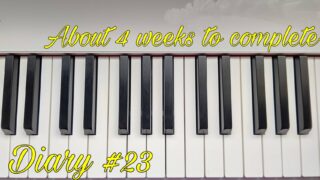TOEFL ibt リーディングテストのスコアを改善するには…
自分も、リーディング問題に苦戦したことがありますが、
一番の対策は、多読をすること。
このシリーズでは、リーディング対策用の設問も合わせて
様々なトピックでリーディング練習が出来るようにしております。
ぜひ、活用して、自身のスコアアップを目指して下さい。
本文
Title: The Reconquista: A Centuries-Long Struggle for Iberian Peninsula
The Reconquista, a historical period spanning nearly eight centuries, was a complex and multifaceted series of campaigns and battles in the Iberian Peninsula. This prolonged conflict unfolded between Christian kingdoms in the north and Islamic territories in the south, shaping the course of medieval history in the region. The Reconquista ultimately led to the re-establishment of Christian rule across the Iberian Peninsula.
Origins and Early Phases:
The Reconquista’s roots can be traced back to the early 8th century when Islamic forces, known as the Moors, began their conquest of the Iberian Peninsula. In 711, the Battle of Guadalete marked a significant turning point, leading to the establishment of the Umayyad Caliphate in Al-Andalus (Islamic Iberia). Over the following centuries, Christian kingdoms in the northern part of the peninsula, such as Asturias and Leon, gradually initiated efforts to reclaim territories from Islamic rule.
The Rise of the Christian Kingdoms:
As the Reconquista progressed, Christian kingdoms gained strength and cohesion. The legendary figure of El Cid, a Castilian nobleman and military leader, became a symbol of Christian resistance during the 11th century. Additionally, the Kingdom of Castile, Aragon, and Navarre emerged as prominent Christian powers, marking the gradual shift of the balance of power in the region.
The Crusades and International Involvement:
The Reconquista coincided with the broader context of the Crusades in the medieval world. The Papacy and various European monarchs encouraged military campaigns against Islamic territories in the Iberian Peninsula, framing it as a holy war. This led to increased international involvement, with knights and warriors from across Europe joining the cause.
Periods of Stalemate and Truces:
The Reconquista witnessed periods of intense conflict as well as moments of relative peace. During times of stalemate, Christian and Islamic forces occasionally negotiated truces, allowing both sides to focus on internal affairs. These truces, however, were often short-lived, as the desire to expand and control strategic territories remained a driving force for both Christian and Islamic rulers.
The Role of the Military Orders:
Military orders, such as the Knights Templar and the Order of Santiago, played a crucial role in the Reconquista. These religious and military organizations were formed to protect Christian pilgrims and territories. The Knights Templar, in particular, became renowned for their martial prowess and strategic acumen in battles against Islamic forces.
The Fall of Toledo and the Final Phases:
The capture of Toledo in 1085 by Alfonso VI of Castile marked a pivotal moment in the Reconquista. Toledo, a former Visigothic capital, became a symbol of Christian resurgence. Subsequent centuries saw the gradual recapture of major cities, including Lisbon in 1147 and Cordoba in 1236. The fall of Granada in 1492, under the Catholic Monarchs Ferdinand II of Aragon and Isabella I of Castile, marked the conclusion of the Reconquista.
Impact on Culture and Society:
The Reconquista profoundly influenced the cultural and social landscape of the Iberian Peninsula. The interactions between Christian, Islamic, and Jewish communities during periods of coexistence left a lasting impact on art, architecture, science, and philosophy. The blending of these diverse influences gave rise to the unique cultural heritage of the region.
設問
1. When did the Battle of Guadalete take place, marking the beginning of Islamic rule in the Iberian Peninsula?
A) 711
B) 1085
C) 1236
D) 1492
2. Which Christian nobleman and military leader became a symbol of resistance during the 11th century?
A) Ferdinand II of Aragon
B) El Cid
C) Alfonso VI of Castile
D) Isabella I of Castile
3. What marked a pivotal moment in the Reconquista and symbolized Christian resurgence?
A) Capture of Granada
B) Capture of Lisbon
C) Capture of Toledo
D) Capture of Cordoba
4. In which century did the fall of Granada occur, leading to the conclusion of the Reconquista?
A) 11th century
B) 12th century
C) 13th century
D) 15th century
5. What were the Moors in the context of the Reconquista?
A) Christian knights
B) Islamic forces
C) Military orders
D) Papal representatives
6. Which kingdom played a significant role in the Reconquista and emerged as a prominent Christian power?
A) Kingdom of Navarre
B) Kingdom of Leon
C) Kingdom of Aragon
D) Kingdom of Asturias
7. What international context influenced the Reconquista due to the Papacy’s encouragement?
A) Crusades
B) Renaissance
C) Hundred Years’ War
D) Norman Conquest
8. What role did the Knights Templar play in the Reconquista?
A) Religious leaders
B) Diplomats
C) Military defenders
D) Merchants
9. What marked periods of relative peace during the Reconquista?
A) Stalemates
B) Crusades
C) Inquisitions
D) Heresies
**10. How did the Reconquista impact the cultural and social landscape of the Iberian Peninsula?**
A) It led to isolationism
B) It had no cultural impact
C) It influenced art, architecture, and philosophy
D) It resulted in the suppression of cultural diversity
解答・解説
- 答え: A) 711
説明: グアダレーテの戦いはイベリア半島でのイスラム支配の始まりを示す重要な出来事で、711年に起こりました。 - 答え: B) エル・シッド
説明: エル・シッドは11世紀にキリスト教徒の抵抗の象徴となったカスティーリャの貴族および軍事指導者です。 - 答え: C) トレドの占拠
説明: トレドの占拠はレコンキスタでの転換点となり、キリスト教の復活を象徴しました。 - 答え: D) 15世紀
説明: グラナダの陥落は1492年に発生し、これによりレコンキスタは終結しました。 - 答え: B) イスラム軍
説明: レコンキスタの文脈では、モール人はイスラム軍を指します。 - 答え: C) アラゴン王国
説明: アラゴン王国はレコンキスタで重要な役割を果たし、顕著なキリスト教国となりました。 - 答え: A) 十字軍
説明: パパシの奨励により、レコンキスタは広い文脈で十字軍運動と同時に進行しました。 - 答え: C) 軍事防御
説明: テンプル騎士団はレコンキスタで重要な役割を果たし、軍事的な防御に従事しました。 - 答え: A) 塞ぎこみ
説明: レコンキスタでは、時折、キリスト教とイスラム教の軍勢が停戦協定を交渉し、両者は内部の問題に焦点を当てることがありました。 - 答え: C) 芸術、建築、哲学に影響を与えた
説明: レコンキスタはイベリア半島の文化と社会の風景に深い影響を与え、キリスト教徒、イスラム教徒、ユダヤ教徒の共存時代の相互作用が芸術、建築、科学、哲学に残りました。
本文の日本語訳
タイトル: レコンキスタ: イベリア半島での数世紀にわたる闘争
レコンキスタは、イベリア半島で約800年にわたる複雑で多面的な一連の戦役と戦いでした。この長引く紛争は、北部のキリスト教国と南部のイスラム教地域との間で展開され、その結果、この地域の中世の歴史の進路が形作られました。レコンキスタは最終的にイベリア半島全域でキリスト教の支配が復活する結果となりました。
起源と初期の段階:
レコンキスタの起源は、イベリア半島でのイスラム勢力であるムーア人が8世紀初頭に征服を始めたときまで遡ります。711年のグアダレーテの戦いは重要な転換点であり、ウマイヤ朝カリフ国(イスラムのイベリア)の成立をもたらしました。その後の数世紀にわたり、アストゥリアスやレオンなど、半島北部のキリスト教国はイスラム支配からの領土奪還の試みを徐々に開始しました。
キリスト教国の台頭:
レコンキスタが進むにつれて、キリスト教国は力と結束を得ました。11世紀にはキリスト教徒の抵抗の象徴であるカスティーリャの貴族兼軍事指導者であるエル・シッドの伝説的な存在が生まれました。また、カスティーリャ、アラゴン、ナバーラの王国が重要なキリスト教国として浮上し、地域の力のバランスが徐々に変わりました。
The Crusades and International Involvement:
レコンキスタは、中世の世界における十字軍の広範な文脈と重なっていました。教皇庁やさまざまなヨーロッパの君主たちは、イベリア半島のイスラム教徒の領土に対する軍事的な遠征を奨励し、これを聖戦と位置づけました。これにより、ヨーロッパ全土から騎士や戦士がこの事業に参加するという国際的な動きが増加しました。
Periods of Stalemate and Truces:
レコンキスタは激しい紛争の時期だけでなく、比較的平和な時期も経験しました。停滞期には、キリスト教徒とイスラム教徒の軍が時折、休戦を交渉し、お互いが内政に注力できるようにしました。しかしこうした休戦はしばしば短命であり、戦略的な領土を拡張し制御するという欲望が、キリスト教徒とイスラム教徒の支配者の双方にとって依然として推進力となっていました。
The Role of the Military Orders:
テンプル騎士団やサンティアゴ騎士団などの軍事団体は、レコンキスタにおいて重要な役割を果たしました。これらの宗教的で軍事的な組織は、キリスト教巡礼者と領土を保護するために形成されました。特にテンプル騎士団は、イスラム教徒との戦闘での軍事的な腕前と戦略的な直感で名高くなりました。
The Fall of Toledo and the Final Phases:
1085年、カスティーリャのアルフォンソ6世によるトレドの占拠は、レコンキスタにおいて転換期となりました。トレドはかつての西ゴート王国の首都であり、キリスト教徒の復活の象徴となりました。その後の数世紀にわたり、リスボン(1147年)やコルドバ(1236年)などの主要な都市が徐々に奪還されました。1492年にはグラナダがカトリック両王フェルディナンド2世(アラゴン)とイサベル1世(カスティーリャ)によって陥落し、レコンキスタは終結しました。
Impact on Culture and Society:
レコンキスタはイベリア半島の文化と社会の風景に深い影響を与えました。共存の時期におけるキリスト教徒、イスラム教徒、ユダヤ教徒のコミュニティ間の相互作用は、美術、建築、科学、哲学に永続的な影響を残しました。これら多様な影響の融合が、その地域の独自の文化遺産を生み出しました。
次の問題
[広告]
確かな英語力は、日々の継続から。
その継続を後押しする、第二言語習得理論に基づいた
オンライン英語学習プログラムがあります。
英語を使う人のための、確実なスキルアップが望める
7日間の無料体験はこちらから!

TOEFL ibt ライティング対策も、
あるテクノロジーを活用すれば、一発解決!
自分1人でも、ライティングは対策出来る時代に。
英会話を始めてみたいけれど、どのサービスが良いか分からない…
そんな方は、まず、この記事で3つのサービスを比べてみてはいかがでしょうか?
英語力を効率良く伸ばすことができるサービス3選です。


-320x180.jpg)





-320x180.jpg)




コメント